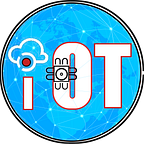NFTs: A thorough interpretation.
Ever heard of NFTs? If not, you must have been living under a rock!
NFTs started quite a buzz in the last year, with some of them being sold for millions of dollars. Digital artworks and memes were being put up for auctions left and right and were being bought for ridiculous prices!
What does NFT stand for?
Non-fungible token. They represent unique and one-of-a-kind ownership of any digital item such as artwork, music, videos, etc. These tokens can be sold and traded and every NFT is different from another.
Before we get into the hows and whats, there are some keywords that you need to have a glance at :
Blockchain technology — Blockchain is a technology specifically made for storing records that makes it hard to hack the system or fabricate the data stored in it, making it safe and unalterable. It is used for digital transactions of cryptocurrency.
Ethereum — It is the most established programmable blockchain where Bitcoins, Ethereum, and NFTs are traded.
Bitcoin — It is a digital currency (also known as cryptocurrency) that can be exchanged between two parties without an intermediary such as banks. They are traded securely on blockchains such as Ethereum.
How are they created and traded?
They can be any unique creation in digital form that is then traded on a blockchain where the transactions for ownership of the NFTs are recorded. While they may seem similar to Bitcoins, they are not cryptocurrencies.
One main difference between Bitcoin and NFT is that Bitcoins are fungible, which means every bitcoin is the same as another (like how every 5 rupee coin is interchangeable) whereas NFTs exist for their identity as unique assets.
Why were they created?
They were created so that the unique ownership of digital assets could be brought into the market with a better regulation on fraud and duplicates.
A good way to understand this would be if we draw a parallel between real-life and digital ownership. The original version of the painting of the Starry Night created by Van Gough, which hangs in the Museum of Modern Art, can be easily recognised and its originality confirmed. However, if a digital artwork is shared online on social media, the exact replicas of it can be downloaded immediately. This endangers the originality of the artwork and brings down the value of the piece.
Thus, NFTs give creators an opportunity to trade and sell ownership of their artwork as tokens while the value of the work is retained with the transaction records on the blockchain. It can be done for any digital creation; however, digital artwork is the most popular form of NFT.
Some popular NFT sales include:
- Beeple, Crossroad: $6.6 million (4400 ETH)
- CryptoPunk #8857: $6.63 million (2000 ETH)
- Julian Assange and Pak, Clock: $52.7 million (16953 ETH)
What you could do with NFTs.
As a buyer.
- You could financially support any artist you really like!
- It gets you into the market and if lucky, you could earn from a resale. It provides you with bragging rights, as well as passes to some exclusive events.
As a seller.
- If your work sells well, you could make a good profit.
- The royalty feature can also be exploited as you would get a percentage cut for every resale.
- Game developers get to sell in-game goods as NFTs, broadening the scope of the system.
The good, the bad, and the ugly.
The good!
- NFTs give a blockchain-based record of authenticity and ownership.
- They provide a new market, especially for artists, allowing them to sell directly to collectors and gain royalties on the resale of their work.
- NFTs also provide opportunities for community building, access to massive organisations, and exclusively organised high-end events.
- It provides buyers a chance to support digital creators and collect assets that are meaningful to them.
The bad.
- Making copies of the digital assets is relatively easy.
- The environmental impact of the blockchain cryptocurrency system is dire; the overall computing power required by Ethereum or similar blockchains uses up huge amounts of energy and emits large quantities of greenhouse gases.
- The trading platforms for NFTs aren’t absolutely secure and there have been incidents of security breaches.
The ugly.
While the concept of NFTs is very resourceful, do they have any real value? The fact that digital copies of almost all NFTs can be downloaded at the click of a mouse, makes the whole thing seem a bit ridiculous. You can only claim ownership of the token, and not even the asset directly.
Now there are sites that let you buy digital land as NFTs, but a token doesn’t provide us with the original land, so buying it would be nothing less than absurd! Currently, the most an NFT can do is paint an illusion of possession.
Future scope — what now?
NFTs have brought in a boundless amount of opportunities and in the future, it could possibly grow to be a whole new system of trading that could co-exist with traditional art trades.
With improvements in technology and security, the market scope for it would gradually increase, providing artists and creators across the world a chance to earn well and design their careers.
Also, more and more options will be available for collectors and creators alike, diversifying and globalising the sharing of digital assets.
So, while NFTs have a long way to go, they could be the digital future of content across the globe!
Written by: Adwaita Basu Bal
